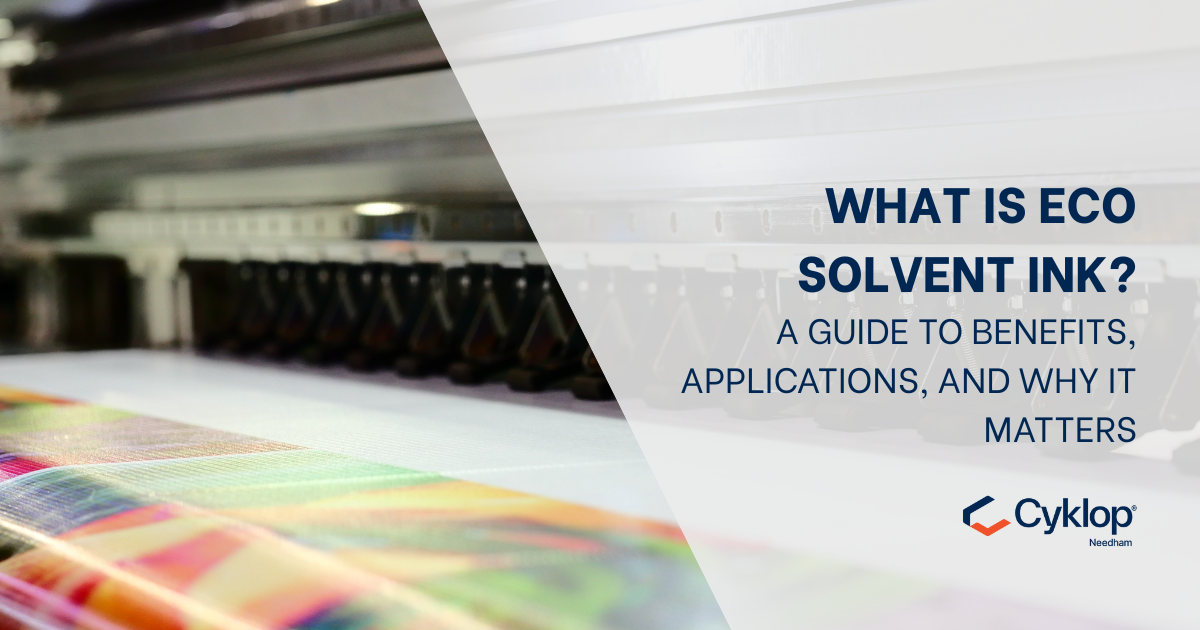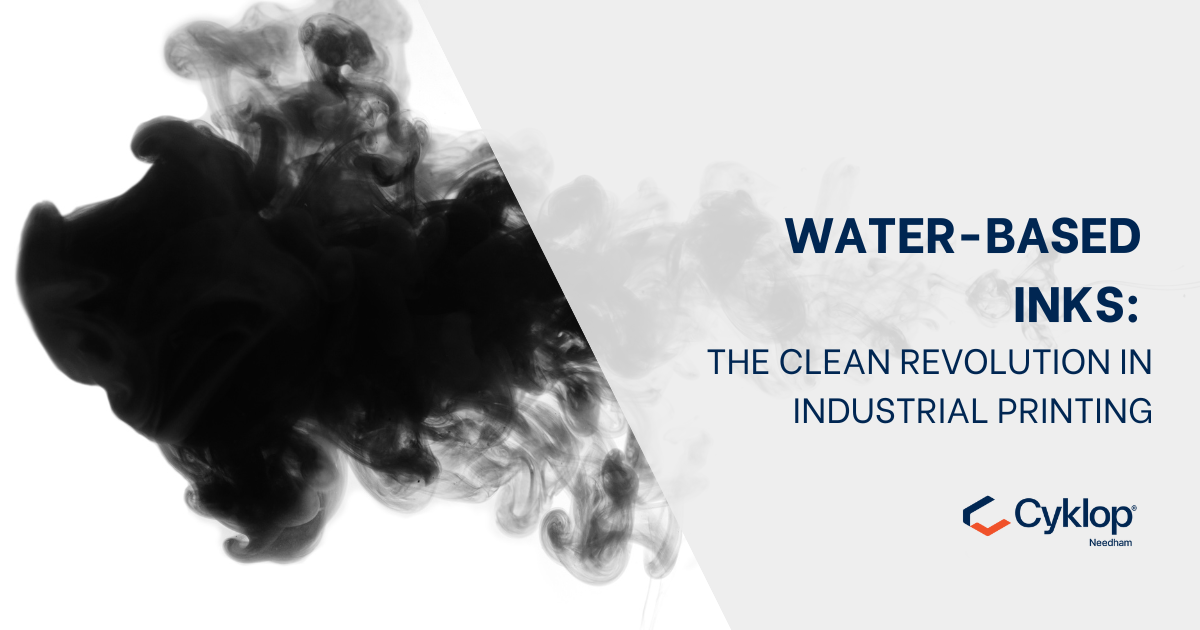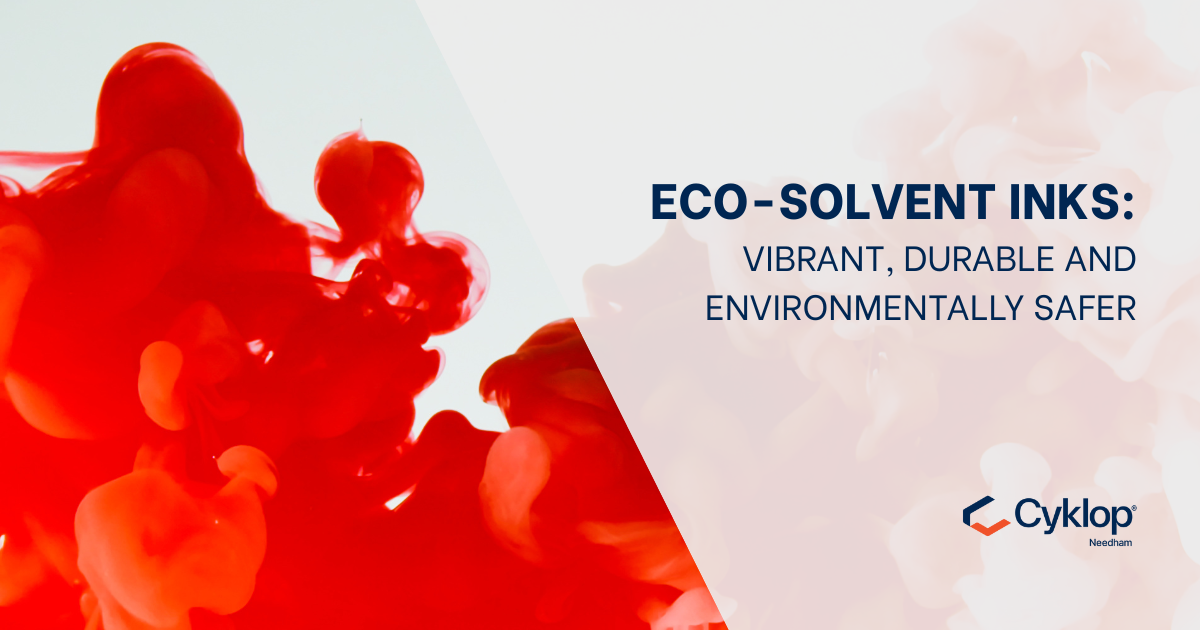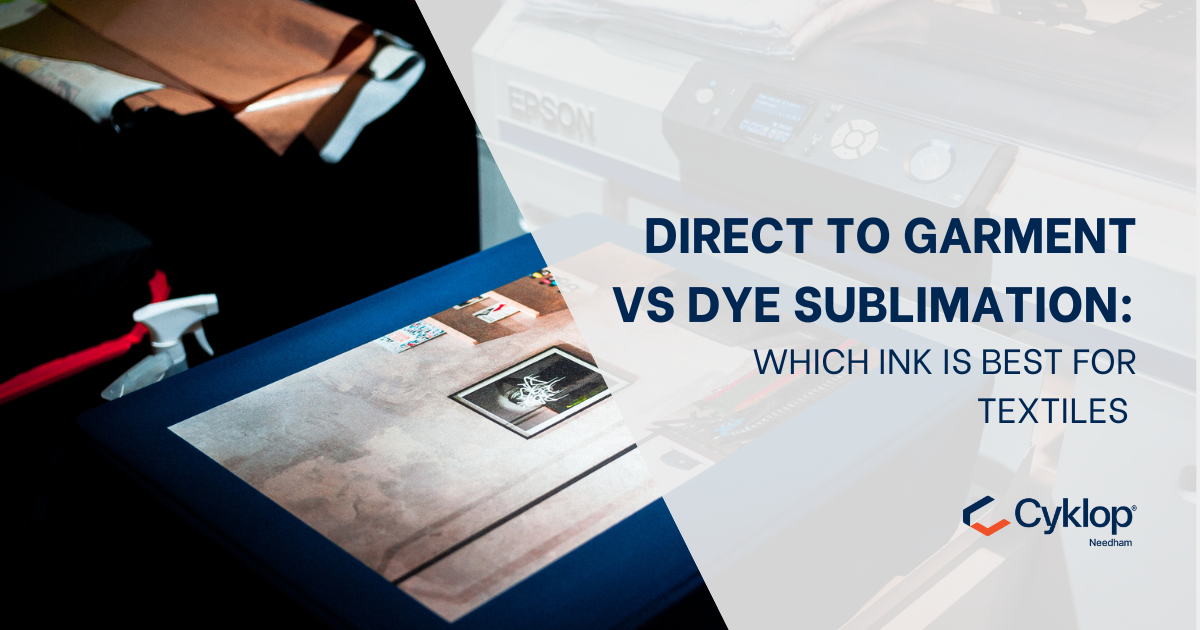Water-Based Inks: The Clean Revolution in Industrial Printing
As sustainability moves to the top of the agenda across industries, water-based digital inkjet inks are gaining traction — not just for their ...
2 min read
Samuel Mcgarrigle
Sep 21, 2023 12:47:17 PM

Eco-solvent ink has become a go-to solution in the world of large format printing, offering a low-odour, environmentally friendlier alternative to traditional solvent inks. But what exactly is eco-solvent ink, and how does it compare to more aggressive solvent-based options?
Let’s break it down.
Eco-solvent inks are made by suspending pigment-based colourants in a mild, biodegradable solvent. Unlike traditional strong solvent inks, eco-solvents contain fewer volatile organic compounds (VOCs), making them safer for both printer operators and the environment.
Originally introduced in the early 2000s, eco-solvent inks were developed in response to industry demand for cleaner, safer alternatives to harsh solvent inks that often required forced ventilation and carried lingering chemical odours.
While heavy-duty solvent inks are still used in industrial settings, eco-solvents have become standard in entry to mid-level wide-format printers—especially where indoor use or environmental considerations are a priority.
Eco-solvent inks are extremely versatile and well-suited for applications that require durability, vibrant colours, and environmental responsibility. Common use cases include:
Eco-solvent inks are waterproof, UV-resistant, and scratch-resistant, making them ideal for long-term outdoor signage exposed to harsh weather conditions.
Thanks to their durability and low VOC content, these inks are widely used for vehicle graphics and wraps, delivering excellent adhesion without damaging vehicle paint or materials.
Eco-solvent inks deliver bold, vibrant colours that are perfect for printing promotional banners, event signage, and exhibition materials.
With heat transfer methods, eco-solvent inks can be used to print onto fabrics like t-shirts, tote bags, and other promotional garments, expanding their usefulness beyond rigid substrates.
Switching to eco-solvent inks can bring measurable advantages to your business, operations, and environmental impact.
Their lower volatility makes them gentler on printer components, meaning fewer system flushes, reduced maintenance costs, and extended printer life.
Unlike strong solvent inks, eco-solvents have minimal odour, so they’re suitable for use in offices, studios, and confined spaces without requiring expensive ventilation systems.
Eco-solvent inks are lightfast, waterproof, and scratch-resistant, providing long-lasting performance even in challenging outdoor environments.
Whether you're printing signage, banners, wraps, or textiles, eco-solvent ink offers a cleaner, safer, and more sustainable choice without compromising on print quality or durability.
At Cyklop Needham, we can help you choose the best eco-solvent ink to match your application, printer type, and production needs.
Get in Touch Today
📞 Call: +44 (0)1948 662629
📧 Email: enquiries@needham-ink.com


As sustainability moves to the top of the agenda across industries, water-based digital inkjet inks are gaining traction — not just for their ...

Eco-solvent inks offer a powerful blend of vivid colour, durability, and lower environmental impact—making them the go-to choice for outdoor signage,...

Printing on Textiles with Wide Format Inks The demand for digitally printed textiles, fabrics, and garments continues to grow, especially in the ...